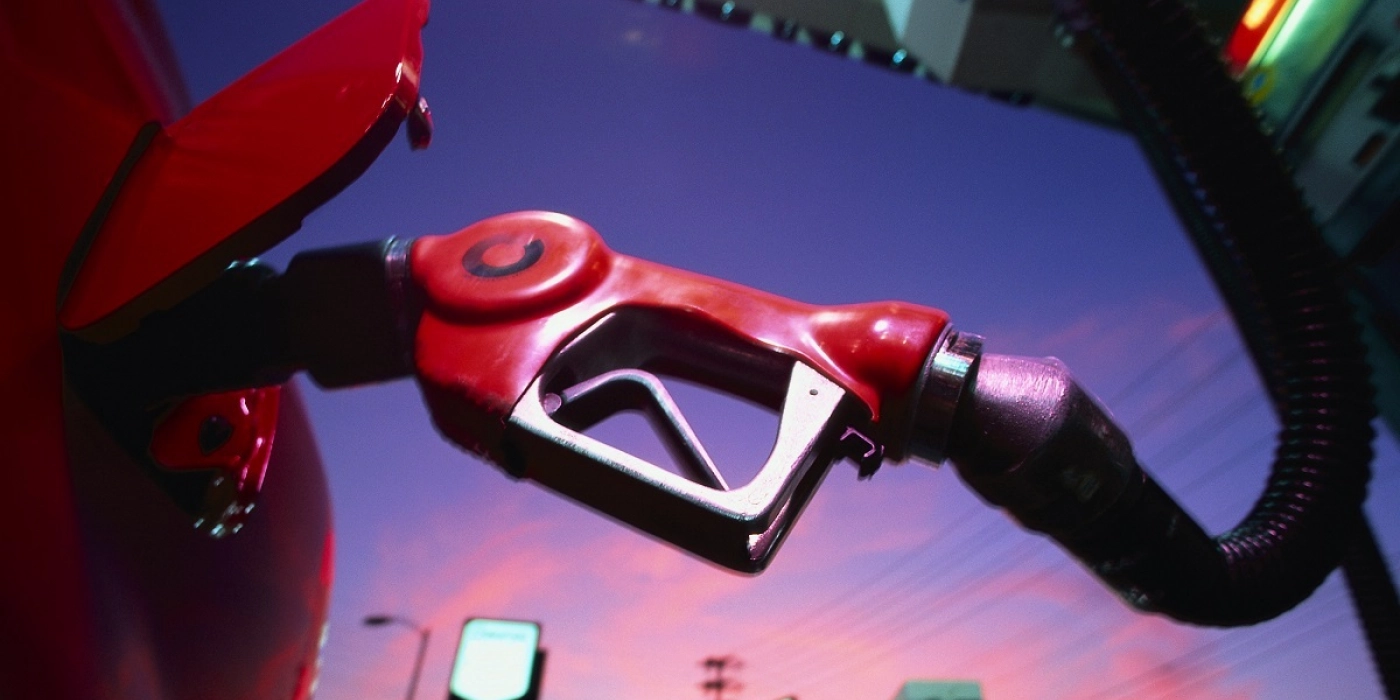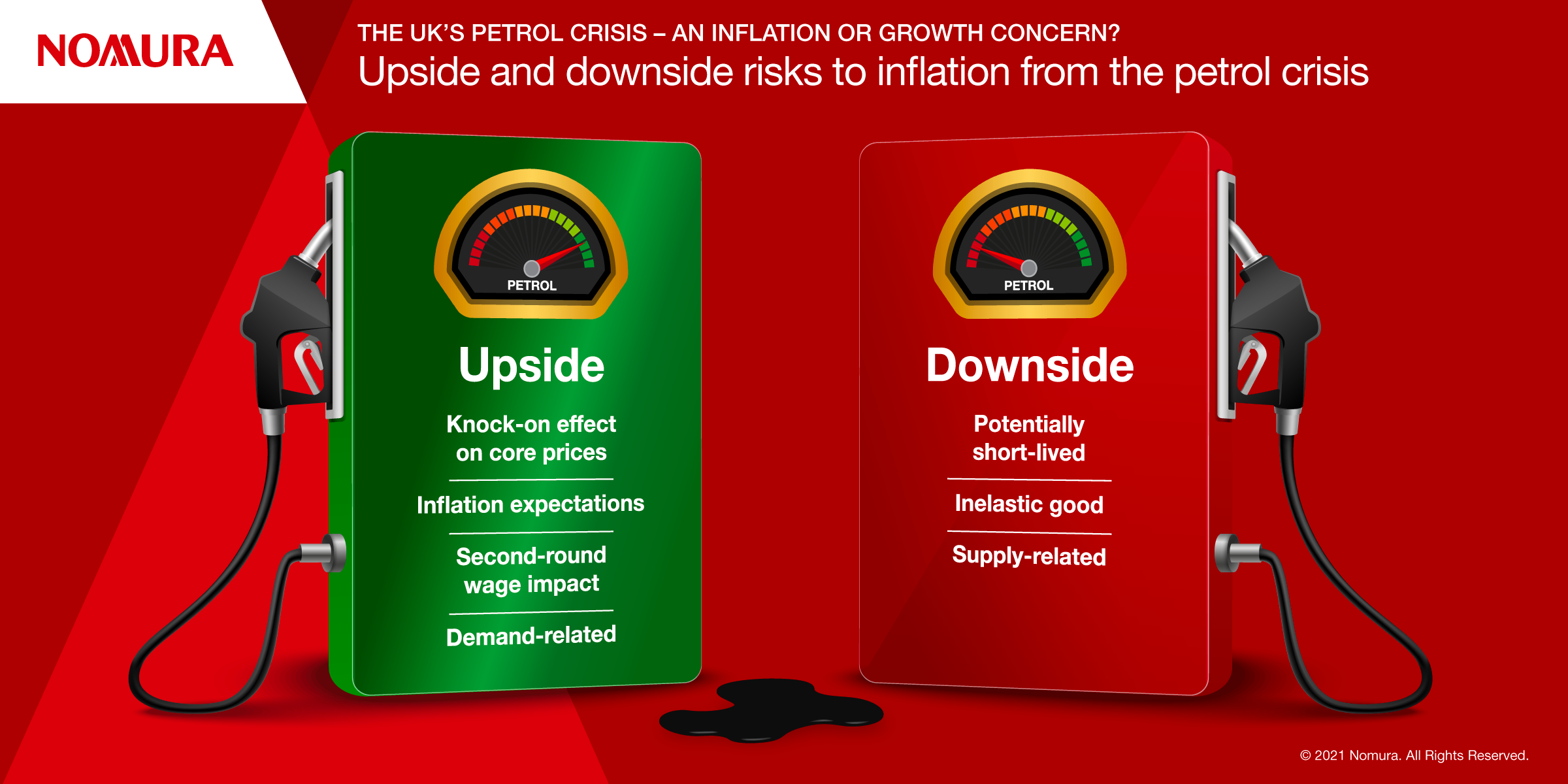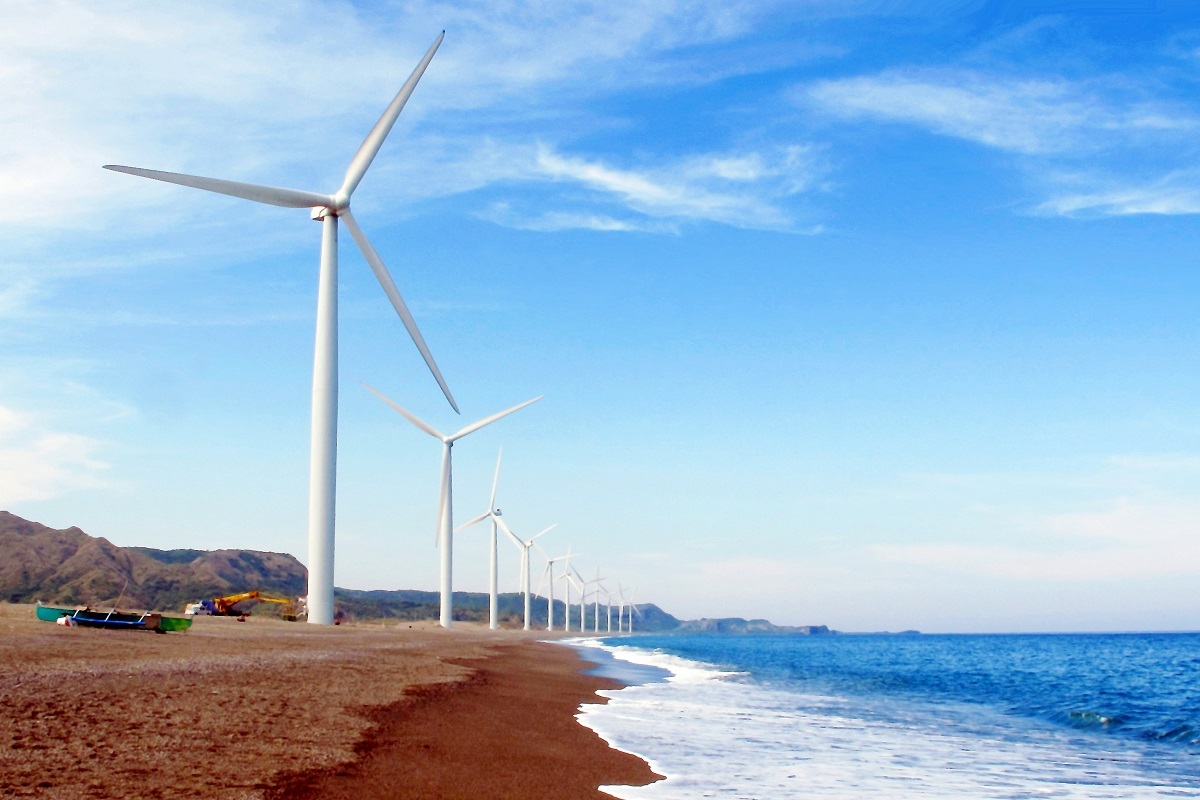Petrol shortages and price rises
Electricity price increases, oil prices on the rise, more general supply constraints, Brexit, and now to add to the list of challenges in the UK we have a petrol crisis thrown in for good measure. What could all of this imply for the Bank of England and, by extension, the markets?
Let’s begin with the latest news over the past week of the HGV driver shortage and petrol crisis. There are a number of implications worth considering.
First, in terms of the near-term impact on retail sales, this should be positive in September at least on the headline measure that includes auto fuel sales. To the extent that most people will not be driving more (aside from to the petrol station to fill up), and there seems to be no realistic way of home storage for petrol other than in the tank of one’s vehicle, demand could retreat back below normal levels over the coming weeks, thereby having an equivalent dampening effect on auto fuel sales in October.
Second, the rise in pump prices that has been apparent over recent days, may be more to do with oil prices rising than with the shortages. When oil prices fell by 15% between early July and mid-August, we saw no equivalent decline in the price of petrol – it remained broadly stable. Thus, it’s questionable precisely how much prices will rise now? Bearing in mind that oil prices are on an upward trajectory, a rise of 5-10% in petrol prices doesn’t sound entirely unreasonable.
Third, as with household energy costs, petrol is an inelastic good – in other words, demand does not tend to be particularly influenced by price. As such, when prices move, volumes of energy purchased tend to remain roughly unchanged, while values adjust.
In this case, the total spend by households on energy will rise as electricity, gas and petrol prices increase, in turn limiting household disposable income and confidence – by virtue of the inclusion of ‘household finances’ in the GfK’s measure.
In addition, on fuel shortages more generally, the closure of petrol stations and the sight of queues at the ones that remain open could themselves damage confidence. We have already seen a deterioration in consumer confidence, falling from -7% to a below-average -13% in September.
Should we be more concerned about higher prices or a slower recovery?
What about energy price rises more generally? The same is largely true as above – higher prices and expectations, but risk of damaging the recovery (especially if a supply shock is responsible, as opposed to price rises being a reflection of stronger global demand).
The important point to note is that the impact on the UK’s recovery will depend crucially on the implications of rising energy prices with respect to where general price inflation settles (or at least where it is expected to settle) in the medium term. That, after all, is the focal point of central banks, largely because changes in policy cannot have much of an effect on output or inflation in the very near term. Consequently, it’s all about judging the upside and downside risks to medium-term inflation from near-term energy related news:
Upside
- Knock-on effect on core prices: Rising energy prices could seep into core prices by virtue of higher overhead costs, such as the cost of power, transportation of goods, heating, lighting.
- Inflation expectations: If prices rise more generally in response to higher energy costs, inflation expectations risk becoming unanchored from their target and a reassertion of central bank credibility may be needed.
- Second-round wage impact: Employees may look for higher wages, which risks generating a wage-price spiral. Difficulties in matching those out of work with vacancies may contribute to cost-push wage pressure.
- Demand-related: Some of the current rise in energy price inflation is due to recovering global demand, in other words a reflection of the recovery rather than just supply issues.
Downside
- Potentially short-lived: Energy prices are one of the more volatile components of the CPI basket and as such may prove less persistent. When energy prices stabilise or reverse, headline inflation too should fall sharply due to base effects.
- Inelastic goods: Being highly price inelastic, higher energy prices sap household savings, denting confidence and reducing the resources that are available to be spent on core goods and services, thereby potentially depressing their price.
- Supply-related: Not all of the rise in energy prices is due to demand. Some might be deemed ‘bad’ energy inflation related to supply (e.g., reduced Russian gas supplies, maintenance work, and lower wind generation).
We remain concerned that higher energy prices, lower confidence and rising virus case numbers could yet scupper the nascent economic recovery. However, we cannot dismiss the alternative upside risks. Rising energy costs are often explained by economists as “temporary” and something the central banks will look through. If taken in isolation, that is often true. However, after a series of positive, consecutive “temporary” surprises in various sectors, not just energy, will consumers really look through this as a one-off? It comes after a series of surprises in near-term inflation forecasting relative to analysts on the Street too – even near-term inflation uncertainty appears high, let alone where it will be in a year or two.
It may start to become difficult for central banks to argue that inflation is transitory and that inflation expectations are well anchored if the evidence points to both rising for longer than previously assumed.
Read the full note on "Is the petrol crisis an inflation or growth concern?" here.






